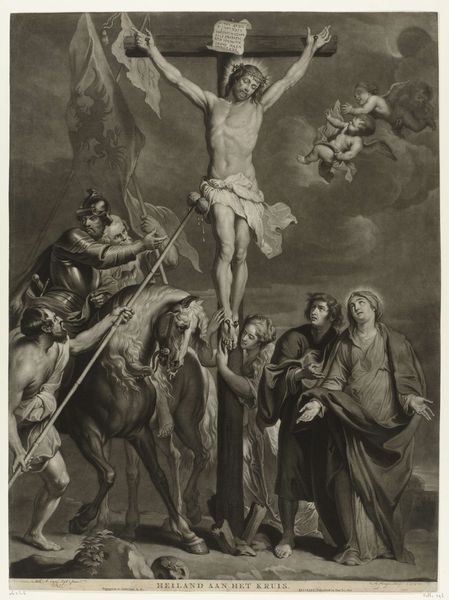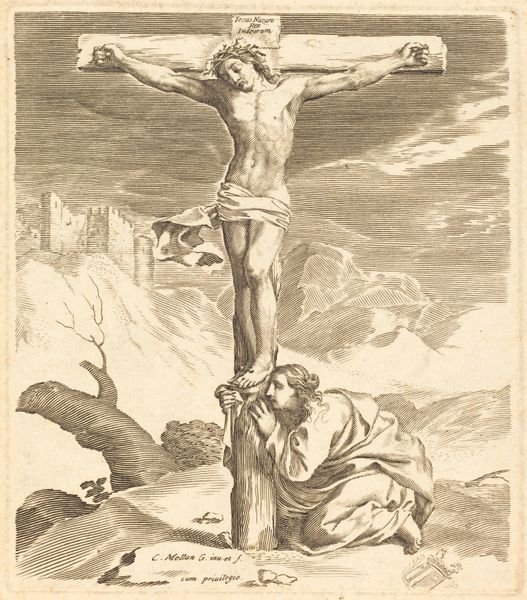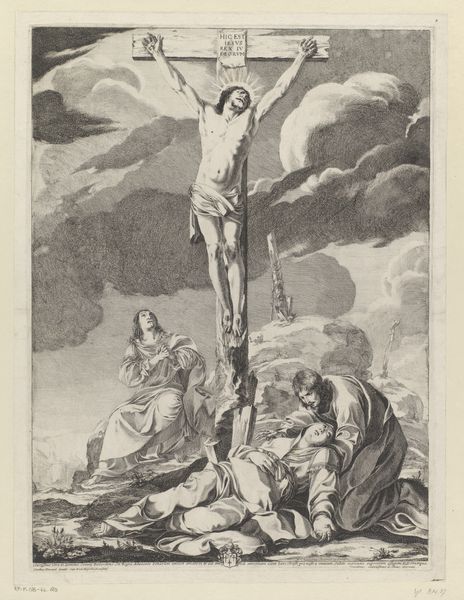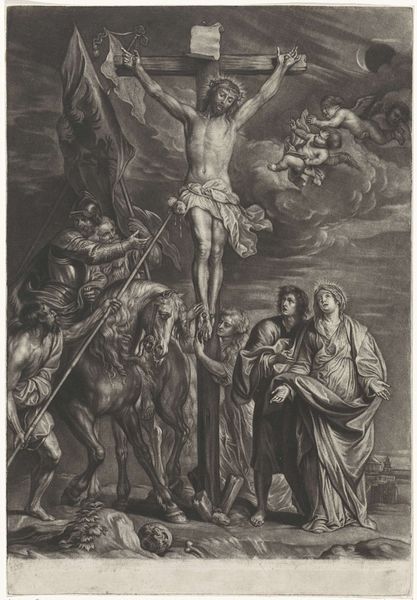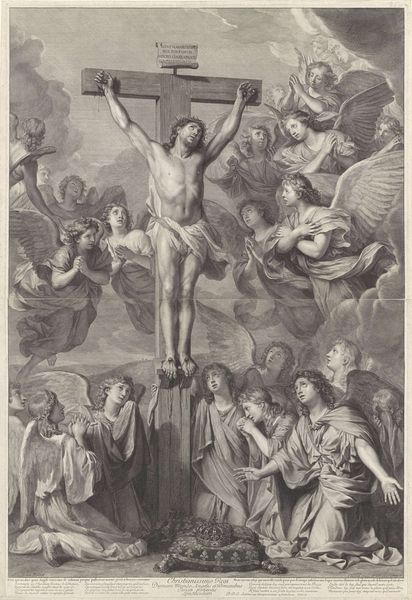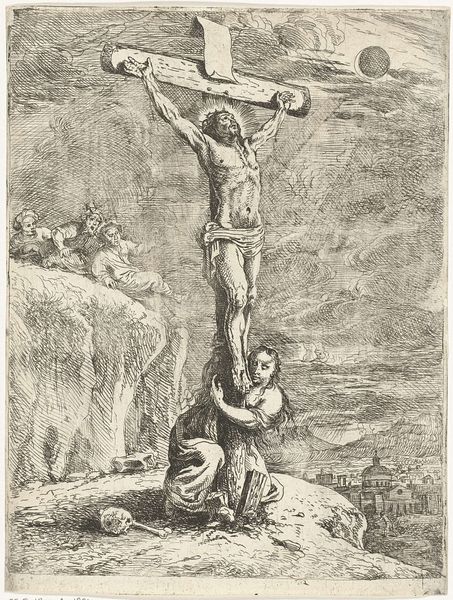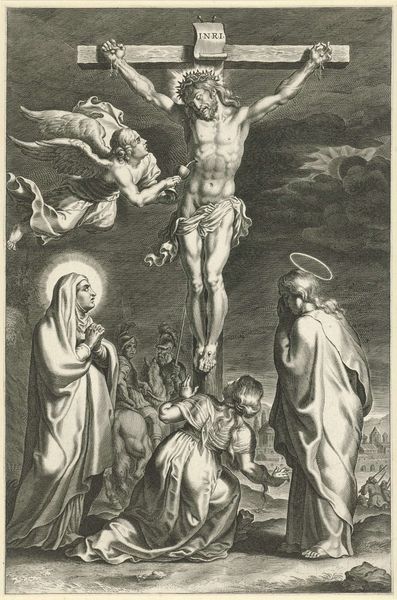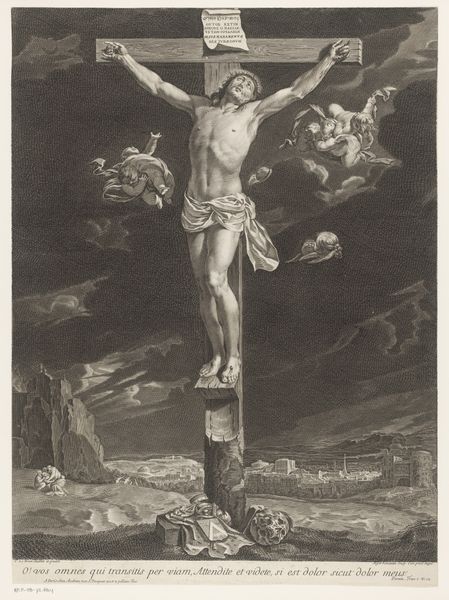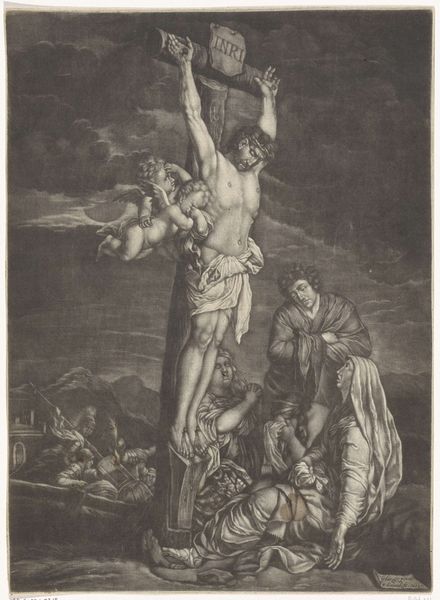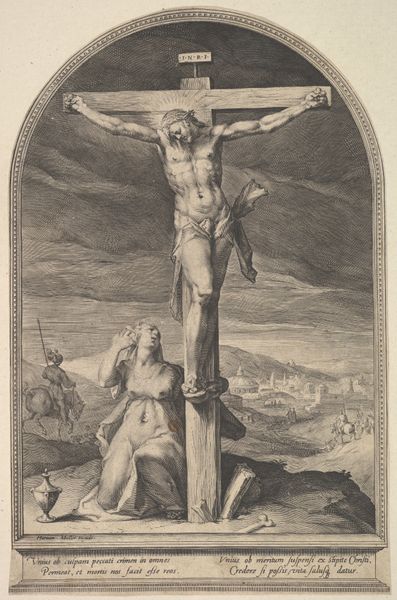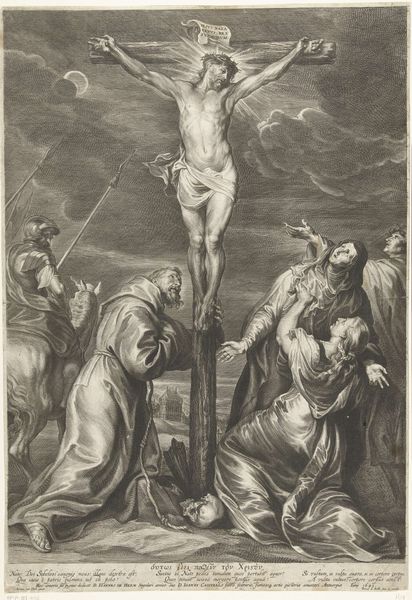
Christus aan het kruis met treurende Maria en Johannes 1613 - 1661
0:00
0:00
print, etching
#
baroque
# print
#
etching
#
landscape
#
figuration
#
history-painting
Dimensions: height 411 mm, width 304 mm
Copyright: Rijks Museum: Open Domain
Curator: Jan Gerritsz van Bronckhorst, a Dutch artist active during the Baroque period, likely created this etching titled *Christus aan het kruis met treurende Maria en Johannes,* sometime between 1613 and 1661. Editor: A powerful image, instantly somber. The contrast is remarkable; the sharp lines of Christ on the cross versus the softer tones of the landscape really amplify the central figure's suffering. Curator: It's interesting how Bronckhorst utilizes the etching medium to explore traditional iconography. The stark black and white reinforces the dramatic narrative. What do you make of the specific symbols chosen? Editor: The skulls and bones at the base certainly reinforce mortality. But notice how Bronckhorst contrasts these with the figures above—angels almost bursting with cherubic vitality. It introduces an interesting visual dialectic. Curator: Precisely. These cherubic figures, symbols of hope and divine intervention, are set against the desolate scene below with grieving Mary and John. They act as cultural reminders, providing comfort in the face of despair. Editor: I agree, there's definitely a deliberate tension created between the chaos of human suffering depicted below, including soldiers and the mourning, versus those almost whimsical floating figures above. But look how the composition also pushes our eye to the city and the empty expanse of space further beyond…it makes you think about consequence, visually and emotionally. Curator: That expansive emptiness seems to reflect the void left by Christ's death, doesn't it? It echoes through the ages; not only for the figures in the foreground but also for those encountering this print centuries later. Bronckhorst evokes shared human anxieties through enduring symbols. Editor: Absolutely, from a formal perspective, it all culminates in drawing your attention directly to Christ and his moment of passing, utilizing both shape and symbolic deployment to its advantage. It really sticks with you. Curator: This print invites us to consider how powerful symbols, even across vast stretches of time, continue to shape our cultural memory and how deeply impactful images become intertwined with emotional and spiritual understanding. Editor: Indeed, reflecting on how carefully considered use of composition and light work together with potent symbolism helps to create such an enduring and compelling narrative.
Comments
No comments
Be the first to comment and join the conversation on the ultimate creative platform.
